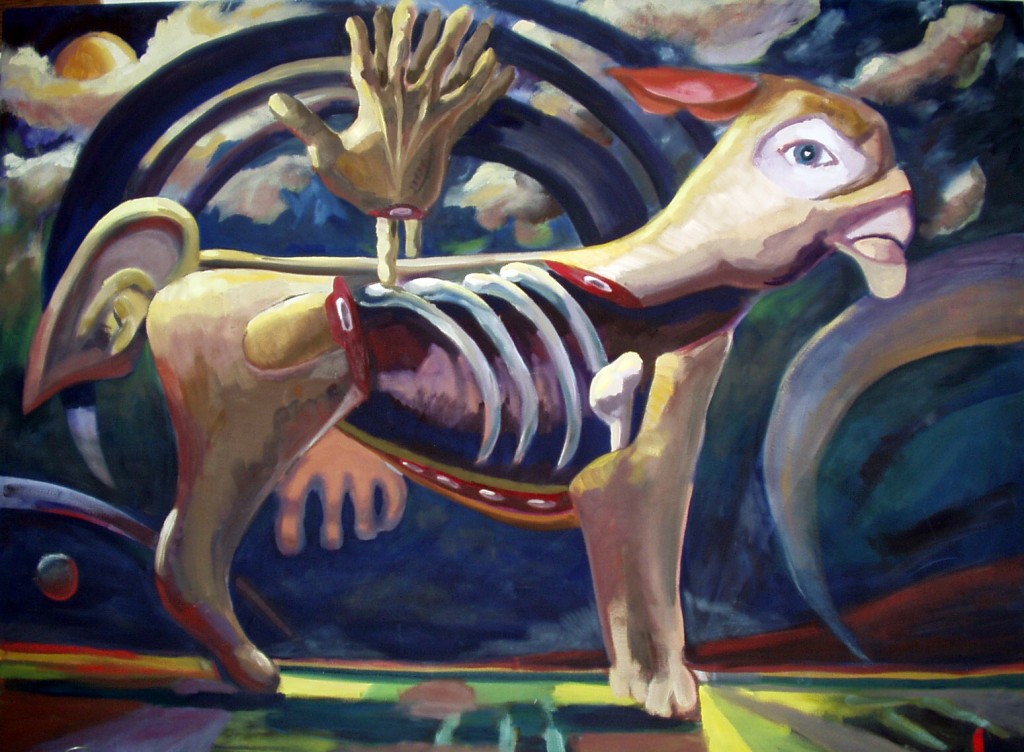Seth Leamer
“Meat Goat”
Inspiration piece
From “A Brief History of the Seventeenth Conflict”
By Amy Souza
Response
First reference to the meat goat can be found in the 26th century, soon after The Conflict. In far back history, goats were said to be important for milk and meat. Their skins were often used for clothing, musical instruments, or to carry the beverage once known as wine. By the time of the great migration, however, goats had lost their significance and become merely pets. During the migration’s second wave, an eight-year-old boy (Patrick Elba, Jr.) from the Low-Thirds Colony, packed his pet goat in a breathing chamber and attempted to sneak it past HSP. When sensors went off, Patrick’s father stepped in and claimed the goat as his own. As punishment, HSP guards laser-carved chunks of the goat’s flesh—while the goat was still alive—forcing child and father to watch. They then turned the laser to the elder Elba’s hands, dipped them in freeze-a-lite, and attached them to the goat’s ribcage. History books say the father refused MedStop and both he and the goat perished before reaching the new world, but some claim both survived and that the elder Elba went on to found the dissenter group NCHF. Traditional organizations claim the meat goat as a symbol of man’s impotence to stop the forces that consume all living beings. They say the creature’s stoic expression serves as a reminder to remain humble, and its sliced-up body indicates that we, like the goat, are not in control. Teachers often warn children that the meat goat haunts reckless people, while alternative groups have claimed the creature as a symbol of strength and perseverance.
——————————————————
Note: All of the art, writing, and music on this site belongs to the person who created it. Copying or republishing anything you see here without express and written permission from the author or artist is strictly prohibited.
